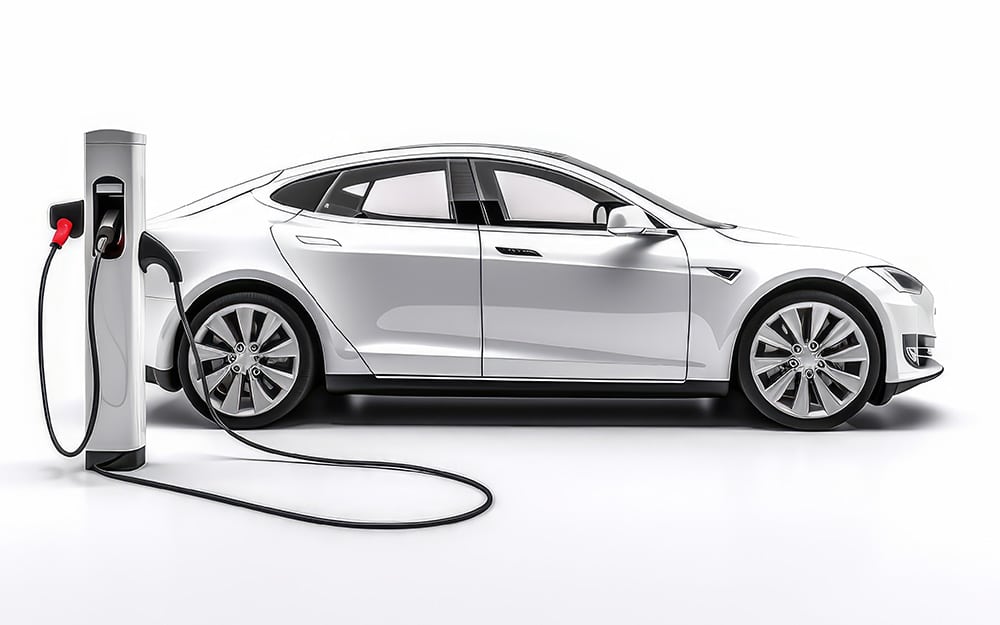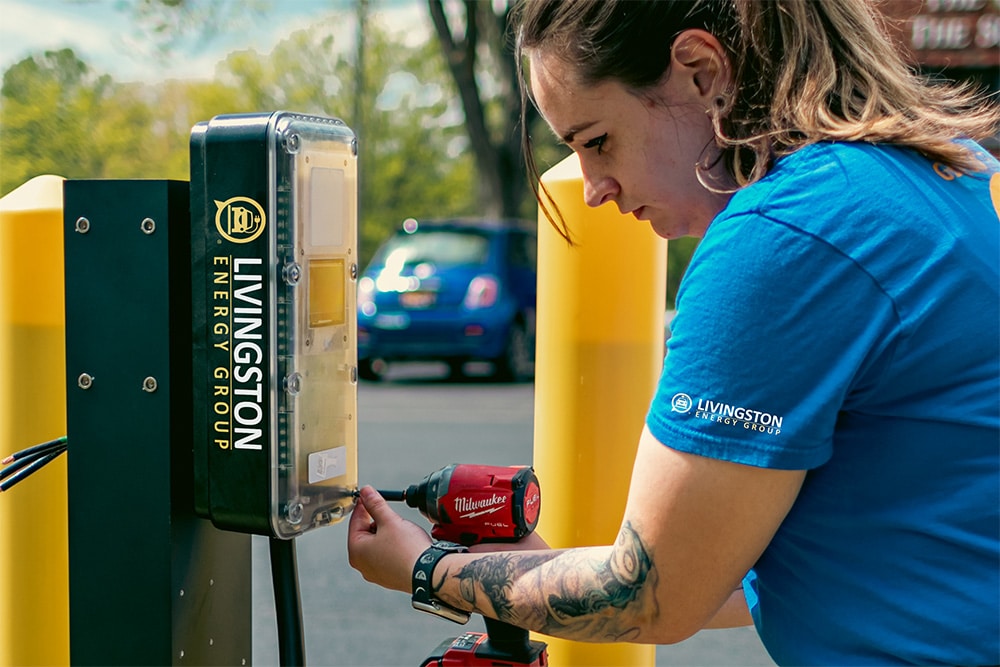
Home » September 2023 » The Green Impact
The Green Impact
Incentives for Creating Green Infrastructure
If you’ve considered adding electric vehicle (EV) charging stations to your location(s), the time is right! Financial incentives in the form of federal, state, and utility grants and programs are designed to help promote the adoption of EVs by creating public and private park-and-charge spaces.
The Bipartisan Infrastructure Law includes up to a $7.5 billion investment in electric vehicle charging designed to help create a national interstate network of convenient, reliable, and accessible charging stations. Two programs within this initiative are the National Electric Vehicle Charging Formula Program or NEVI ($5 billion) and the Discretionary Grant Program for Charging and Fueling Infrastructure or CFI ($2.5 billion).
The NEVI program has requirements for potential applicants, including location along designated FHWA Alternative Fuel Corridors (AFCs), non-proprietary charging stations, allowing for open-access payment methods, stations must be publicly available, offer 24/7 lighting and amenities such as food and bathrooms. The program helps to underwrite 80% of the purchase and installation of DCFC fast chargers, which can fully charge an EV in 15 to 30 minutes. Additional requirements call for American-made chargers, 97% station uptime, data reporting, and a five-year maintenance contract for the stations.
The CFI program is a competitive grant program designed to “strategically deploy publicly accessible electric vehicle charging infrastructure as well as hydrogen, propane, and natural gas fueling infrastructure along designated Alternative Fuel Corridors or in other publicly accessible locations.” Of note is that “at least 50% of CFI funding must be used for a community grant program where priority is given to projects that expand access to EV charging and alternative fueling infrastructure within rural areas, low- and moderate-income neighborhoods, and communities with a low ratio of private parking spaces.”
Beyond these two large federal programs, dozens of state and utility-based funding programs, including a few states (NY, GA, WA), offer tax incentives. Full turnkey EV charging companies will often assist with identifying and helping to procure funding for infrastructure projects such as installing stations. Often, funding specialists can identify and utilize several funding opportunities for a single project (stacking).
Check with your local utility to see if they offer an EV Make-Ready Program and/or a Charge-Ready Program. These programs “support the development of electric infrastructure and equipment necessary to accommodate an increased deployment of EVs by reducing the upfront costs of building charging stations for EVs.” Make-Ready programs are designed to defray the costs of preparing a site, including site preparation and electrical infrastructure. Charge-Ready programs help pay for the actual charging equipment, either Level 2 or Level 3 chargers. Not all states offer these programs, but other funding opportunities are often available which serve similar purposes.
One of the biggest considerations when planning charging infrastructure is access. Are your lots public or private? This matters because funding programs tend to favor public access, and generally fund private installations at 50% of the public funding Level.
The other important consideration for your location is dwell time. How long do your patrons park? Is it an eight-hour workday or overnight lot, or a short-stay downtown or retail-adjacent lot? Dwell time informs and helps determine the appropriate Level of EV chargers for your customers. Level 2 chargers are a good choice for workday or overnight lots as they fully charge a vehicle in approximately eight hours. Level 3 DCFC fast chargers that can fully charge a vehicle in 15 to 30 minutes make sense for short-term parking, such as entertainment venues, downtown lots, and retail parking.
When planning your site installation, the location and proximity to electric service (utility) factor into the make-ready price. There’s a considerable price difference between Level 2 and Level 3 chargers. For Level 2 chargers, the cost ranges between $2,000–$5,000 per station; for Level 3 chargers, the cost is between $40,000 and $65,000—with funding incentives and tax breaks substantially helping to offset these costs.
Like NEVI and CFI, most funding programs have requirements including Made in America, utility certification, and uptime. This last consideration can be adversely affected in subterranean parking locations, where poor connectivity can diminish uptime to fall outside of the required percentage.
“Our advice to those interested in installing EV chargers is to partner with a full-service EV charging company that can help you determine an appropriate solution for your location and navigate the myriad funding opportunities available from federal, state, and utility programs,” says Will DeRuve, VP of North American Sales at Livingston Energy Group. “Finally, look for a total package that includes servicing and maintaining your stations and providing the required data reporting to the funding sources.” ◆
-
This author does not have any more posts.


Electric Vehicle Charging Operations Research
Preliminary Results

Exploring the Power of Smart Parking
An Ally for a Greener Tomorrow





